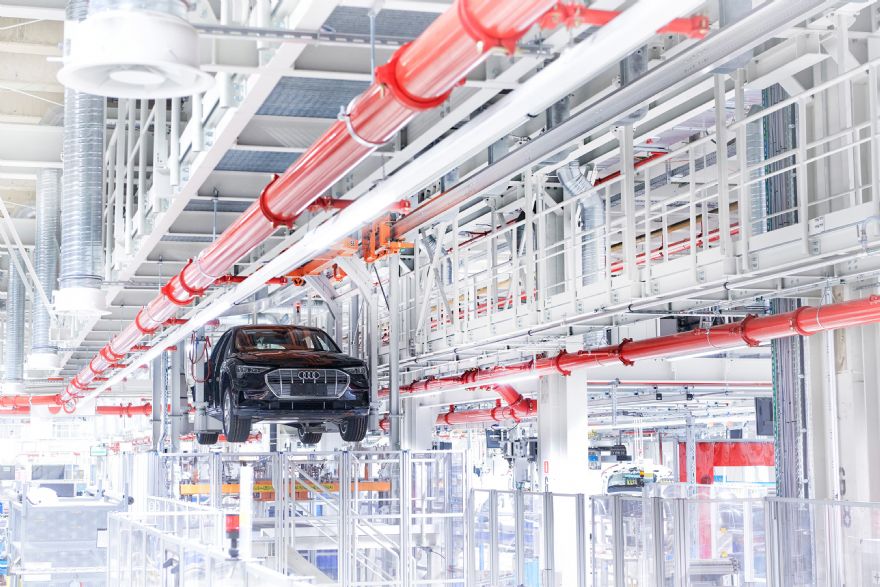
Production of
Audi’s final new combustion engine model will start in just four years, as beginning in 2026, the company will only release models onto the market that are powered purely by electricity, phasing out the production of internal combustion engines by 2033.
Furthermore, Audi says that in order to become a leading provider of ‘net-zero carbon mobility’, the company is also optimising every link in its value chain and committing itself to the expansion of renewable energy.
Audi wants to be a net-zero carbon emissions manufacturer by no later than 2050. By 2025, the company plans to offer more than 20 fully electric, battery-driven cars; and at the same time it wants to reduce the ecological footprint of its fleet — by 30% as compared with 2015.
A central goal is to make production carbon neutral at all sites by 2025. This has already been achieved as an interim target at Audi Hungaria and Audi Brussels. The company says it is addressing all its processes: not only the sourcing of raw materials and production itself, but also the utilisation phase and recycling or re-use at the end of a car’s life cycle.
Audi says that the transition to e-mobility sees a portion of total carbon emissions is being transferred to the supply chain. In particular, this concerns electric cars’ lithium-ion batteries, which require particularly energy-intensive production and account for almost a quarter of all carbon emissions per car produced.
By 2018, the company had already initiated its “CO
2 Programme in the Supply Chain” to identify steps to further reduce CO
2 together with its suppliers.
Marco Philippi, Audi’s head of procurement strategy, said: “We are convinced that our suppliers play a key role in our success with respect to sustainability. Opportunities can be found primarily in closed material cycles, a gradual increase in the use of secondary materials, the application of materials from recycling processes in plastic components, and using ‘green’ electricity.
“These measures will also be in full operation by 2025 and, according to our calculations and those of our suppliers, have the potential to save an average of 1.2 tonnes of CO
2 per car.”